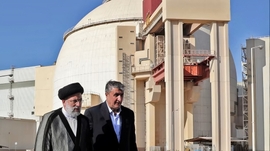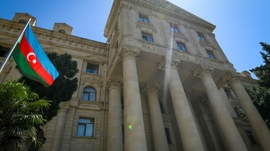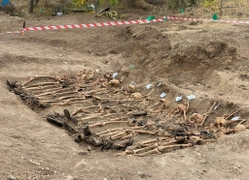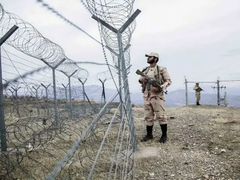Azerbaijan has discovered mass graves in its Karabakh region, which are believed to belong to the Azerbaijani citizens that went missing during the First Karabakh War with Armenia in the early 1990s, the country’s Foreign Minister Jeyhun Bayramov said.
Minister Bayramov expressed his confidence that the Armenian authorities knew about the graves, however, they have been rejecting to share information about their location.
“If in a short period of time Azerbaijan was able to identify and find graves in the territories liberated from occupation, of course, the Armenian side, which committed these acts, is more aware of this. Therefore, the illogical explanations of the Armenian side regarding the missing persons cannot have any grounds,” Bayramov said, adding Baku has raised issues on all relevant international platforms regarding the fate of captives, missing people, and hostages.
The press secretary of the Armenian Foreign Ministry, Vahan Hunanyan, has recently stated that Yerevan had no obligation to provide information about the fate of Azerbaijanis who went missing during the war.
Baku is convinced that such a statement of Yerevan fails to adequately respond to Azerbaijan’s humanistic actions after the Second Karabakh War in 2020. Leyla Abdullayeva, press secretary of the Azerbaijani Foreign Ministry, said Azerbaijan handed over the bodies of more than 1,700 Armenian servicemen to the opposite side immediately after the war despite Armenia’s reluctance to provide any information about thousands of missing Azerbaijanis.
Armenia and Azerbaijan had been in an armed conflict for nearly 30 years over the Karabakh (Garabagh) region, an internationally recognized territory of Azerbaijan. Armenia launched full-blown military aggression against Azerbaijan following the Soviet Union’s dissolution in 1991. The bloody war lasted until a ceasefire in 1994 and saw Armenia occupying 20 percent of Azerbaijan’s internationally recognized territories. Over 30,000 Azerbaijanis were killed, and one million were expelled from those lands in a brutal ethnic cleansing policy conducted by Armenia.
On September 27, 2020, the decades-old conflict took a violent turn after Armenia’s forces deployed in the occupied Azerbaijani lands shelled military positions and civilian settlements of Azerbaijan. During the counter-attack operations that lasted 44 days, Azerbaijani forces liberated over 300 settlements, including the cities of Jabrayil, Fuzuli, Zangilan, Gubadli, and Shusha, from nearly 30-year-long illegal Armenian occupation. The war ended in a tripartite statement signed on November 10, 2020, by Armenia, Azerbaijan, and Russia. Under the statement, Armenia also returned the occupied Aghdam, Kalbajar, and Lachin districts to Azerbaijan.
According to data compiled by the Azerbaijani government, 3,890 Azerbaijani citizens, including 71 children, 267 women, and 326 elderly people went missing during the First Karabakh War in 1991-1994. Baku has been demanding that Armenia assist in investigating the fate of those people, a request that remains unfulfilled.
Post-war searches in the liberated territories unearthed the remains of 12 civilians in the Kalbajar district, where the Bashlibel mass murder was committed by the Armenian armed forces in 1993. In order to determine the victims’ identities, the samples of DNA (deoxyribonucleic acid) were taken from the remains of the corpses and family members who claimed to be close relatives of the buried persons.
Before Bashlibel, the Armenian armed forces organized the genocidal acts in the town of Khojaly on February 26, 1992, and in Kalbajar’s Aghdaban village on April 8-9 of the same year. The death toll of massacres in Khojaly and Aghdaban was 613 and 67, respectively. In addition, 1,275 Azerbaijanis were taken as hostages in Khojaly. Another 150 Azerbaijani nationals went missing, and their fates remain unknown to this day. Those suffering major injuries or having been maimed totaled 487, including 76 children.
In January 2022, a special mission from Azerbaijan’s State Commission on Prisoners of War, Hostages and Missing Persons has found the graves of the Azerbaijanis killed during the Dashalti military operation near the city of Shusha in 1992. Exhumation of the graves has been conducted to extract DNA samples for forensic medical examination. According to the Commission’s data, 44 people went missing during the operation in the Dashalti village.
Historians and analysts in Baku believe that mass graves of Azerbaijanis killed by Armenians could be found in multiple locations in the Karabakh region.
In 1992, some 77 civilians were killed and 84 taken as hostages by the Armenian troops in the Garadaghli village of Azerbaijan’s Khojavand district. Armenian military committed similar vandalistic acts against more than 50 Azerbaijanis in the Malibeyli and Gushchular villages of the Shusha district in the same year. Thirteen people were reportedly taken as hostages and fifteen were killed in each village.
The Meshali village of the Khojaly district staged one of the bloodiest genocide acts committed by the Armenian forces. The village was almost erased from the map in 1991, when armed Armenians attacked its innocent population killing more than 30, burning 12 alive, including children, women, and the elderly. Three houses in the village were set on fire with no family being allowed to escape.
The Baghanis Ayrim village in the Gazakh district, the Karkijahan settlement in the city of Khankendi, the Edilli village in the Khojavand district, the Chamanli village in the Aghdam district, and others are also believed to be home to mass graves of Azerbaijanis killed by Armenians in 1991-1994. Baghanis Ayrim witnessed the first mass murder by the Armenian forces against civilian Azerbaijanis in the First Karabakh War. The village is still one of the seven illegally occupied villages in the far western Gazakh district of Azerbaijan located on the Armenia-Azerbaijan border over 200 kilometers far from the Karabakh region.


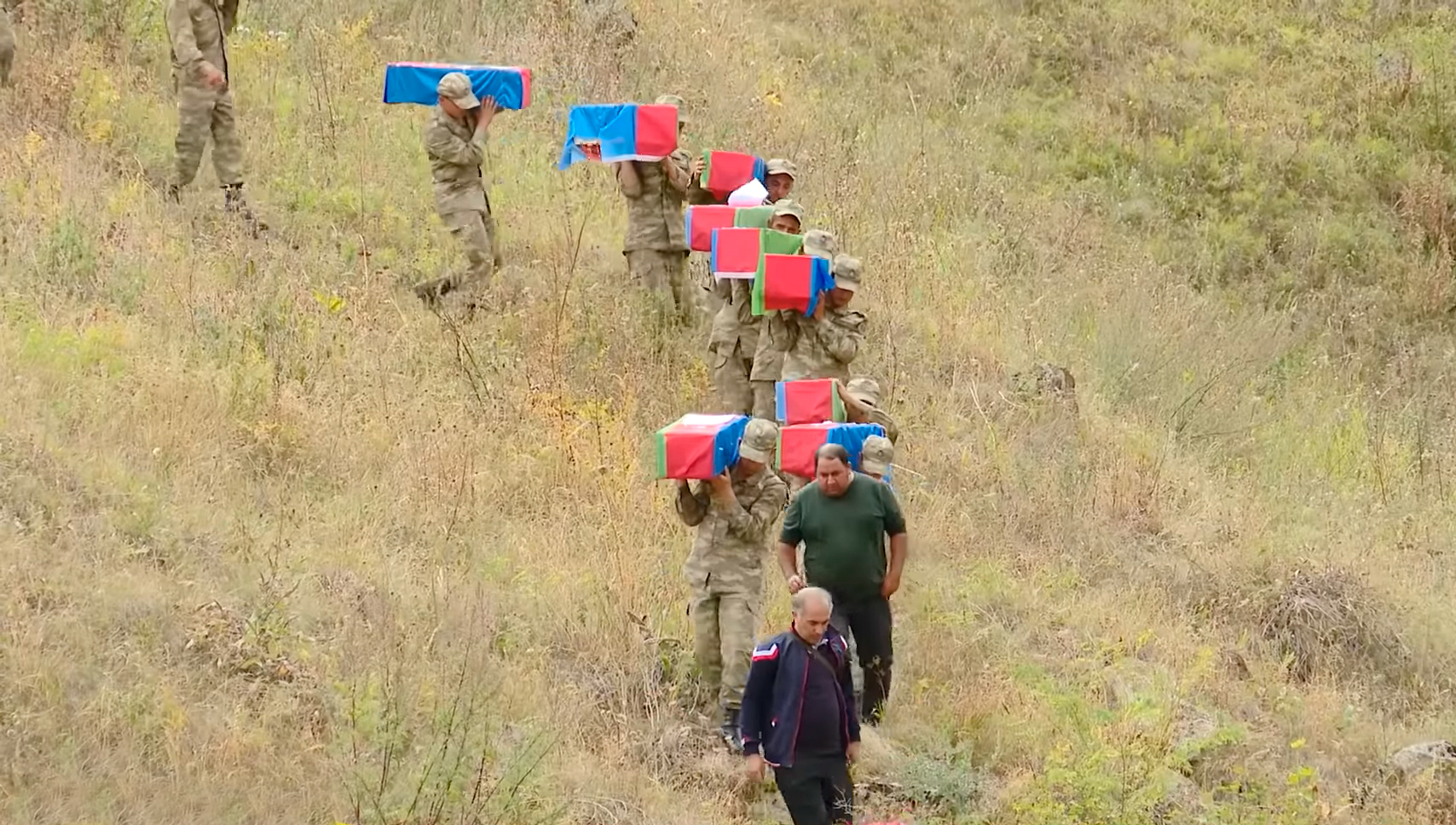




 The Azerbaijani government has rejected the recent claims made by French Interior Minister Gérard Darmanin, who accused Baku of fostering separatis...
The Azerbaijani government has rejected the recent claims made by French Interior Minister Gérard Darmanin, who accused Baku of fostering separatis...
 Iran is moving to fortify its eastern border with Afghanistan in a bid to fight illegal migration and drug trafficking, along with enhancing security.
Iran is moving to fortify its eastern border with Afghanistan in a bid to fight illegal migration and drug trafficking, along with enhancing security.
 The Iranian and Cuban transport ministers have discussed expanding maritime and air transportation cooperation.
The Iranian and Cuban transport ministers have discussed expanding maritime and air transportation cooperation.
 U.S. Secretary of State Antony Blinken reiterated Washington’s unwavering support for the ongoing peace process between Azerbaijan and Armenia in a...
U.S. Secretary of State Antony Blinken reiterated Washington’s unwavering support for the ongoing peace process between Azerbaijan and Armenia in a...
